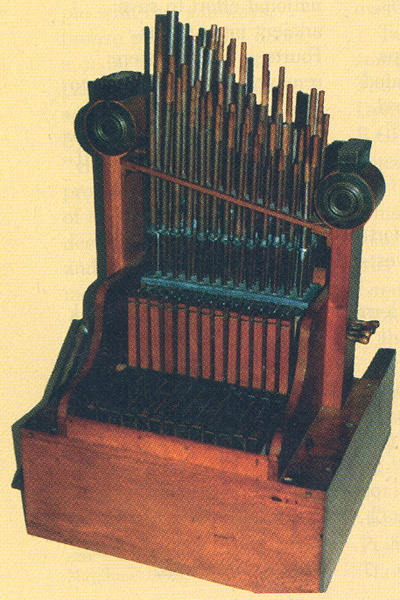Ancient Life: Water Music
But did Rome have a national anthem?
Around 246 B.C., the Alexandrian inventor Ctesibius was trying to perfect a hydraulic mirror for his father’s barber shop. Suddenly he realized that he could produce a pleasant sound by forcing pressurized air through a tube. Delighted, Ctesibius proceeded to invent the hydraulis—an organ that used a hydraulic pump to blow air through a set of pipes of different lengths.
The design of Ctesibius’s organ was recorded two centuries later in diagrams made by the Greek inventor Hero (first century A.D.). According to Hero’s diagrams, Ctesibius’s hydraulis used a bellows to pump air into a pnigeus—a small chamber partially filled with water and submerged within a larger, sealed cistern. As air was pumped in, the water level in the cistern rose, creating a pocket of pressurized air in the chamber. This pressurized air could be released into the organ when the musician depressed a key on his instrument.

Over the centuries, the hydraulis became popular throughout the Roman Empire. The organ shown above is a modern reconstruction of an 18-inch-high, third-century A.D. hydraulis discovered in 1931 at Aquincum (modern Budapest). According to a tablet once affixed to its windbox, it was presented by a high-ranking official named Gaius Iulius Viatorinus to the local Firefighters Association in 228 A.D. Ironically, the Firefighters Association headquarters burned down not long after the gift was made; the wood and bronze organ was preserved beneath the blackened rubble.
Already a library member? Log in here.
Institution user? Log in with your IP address.

